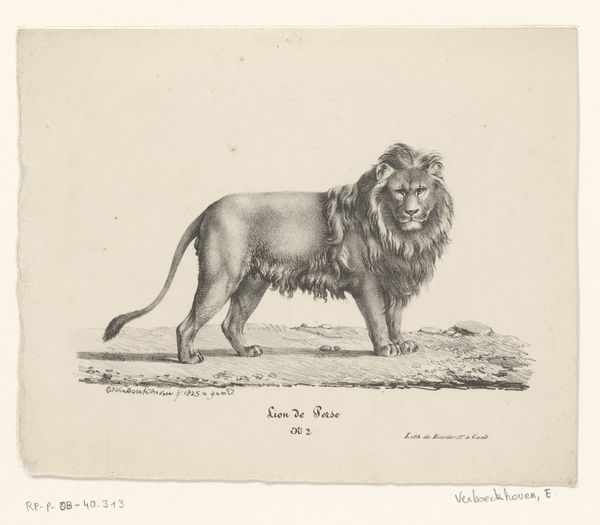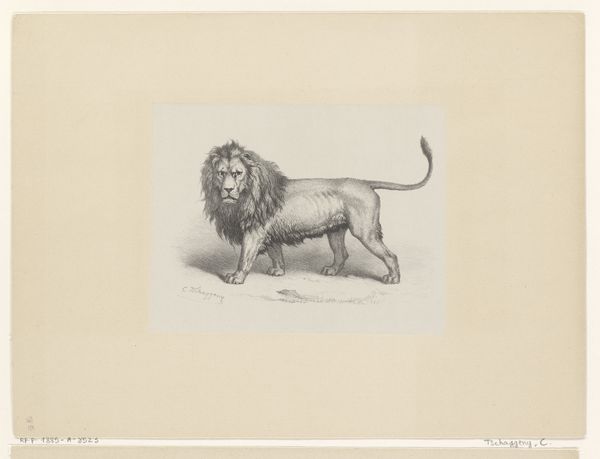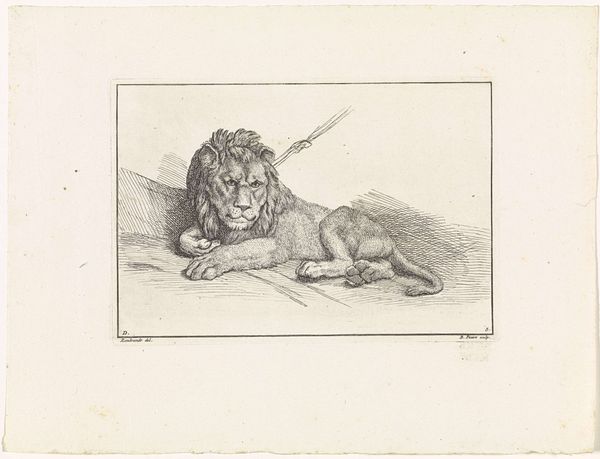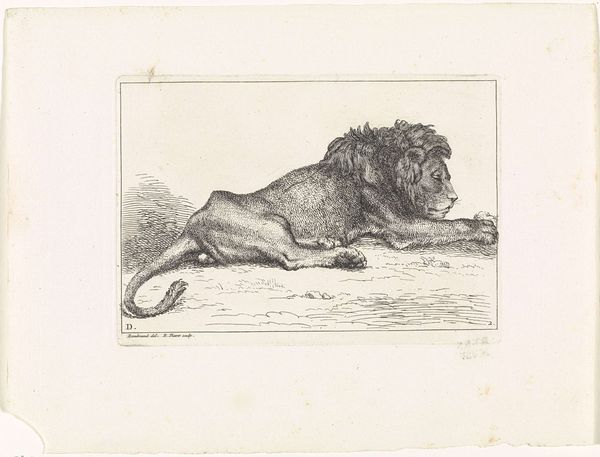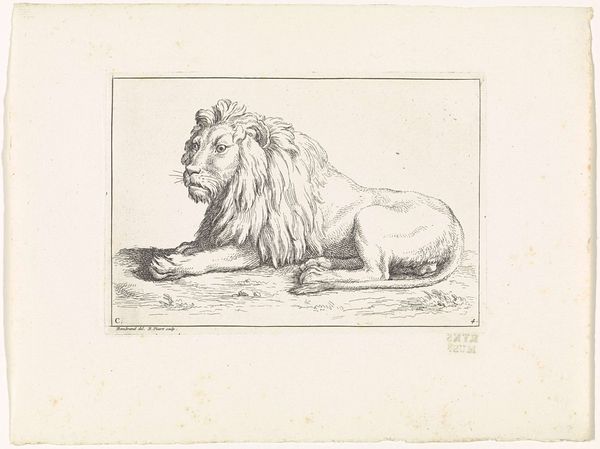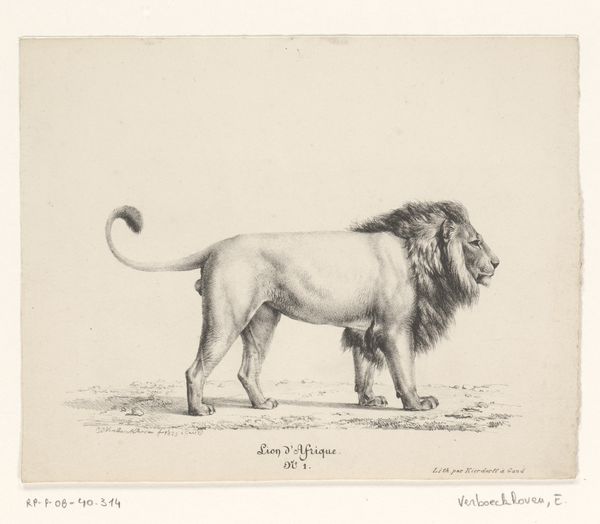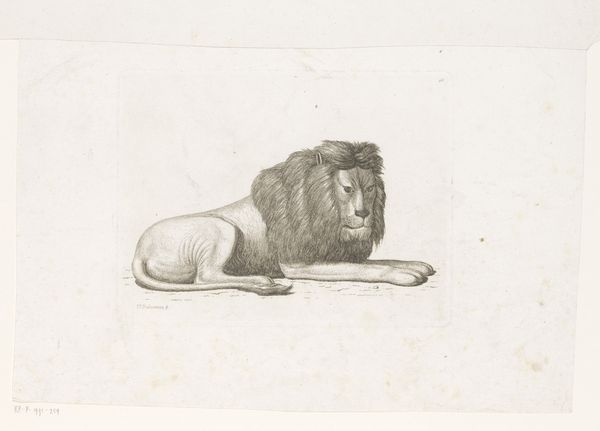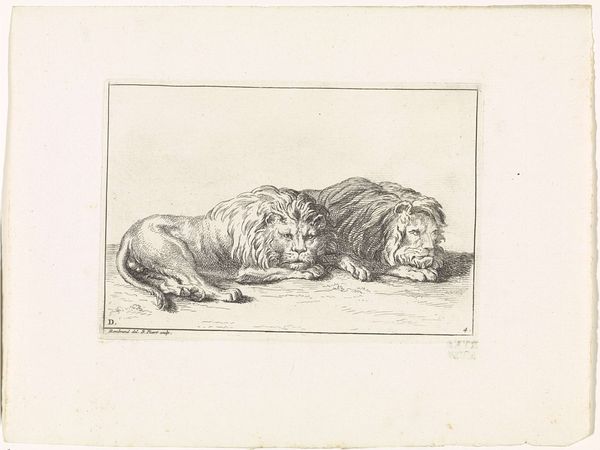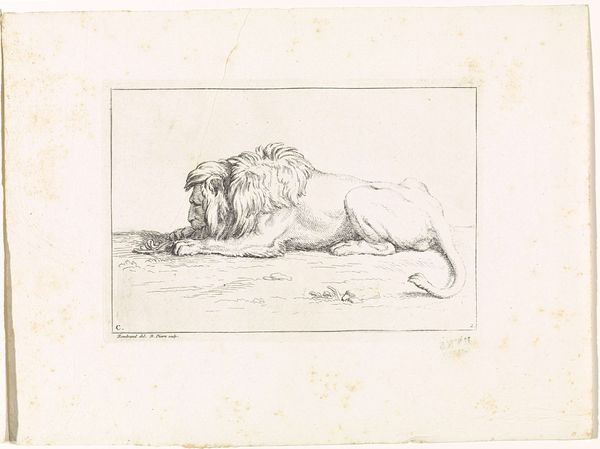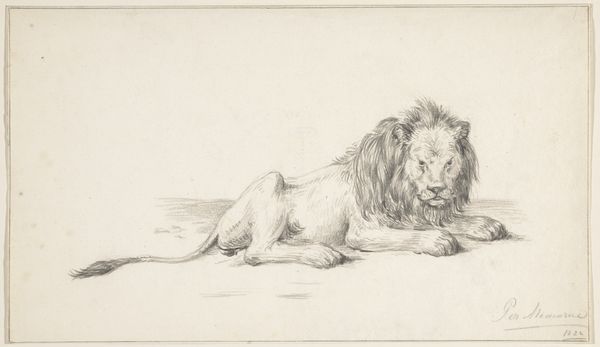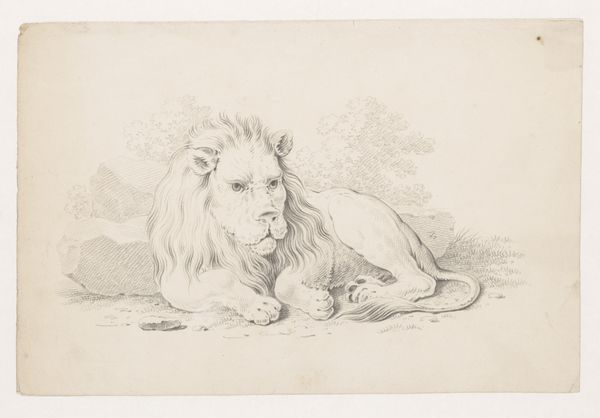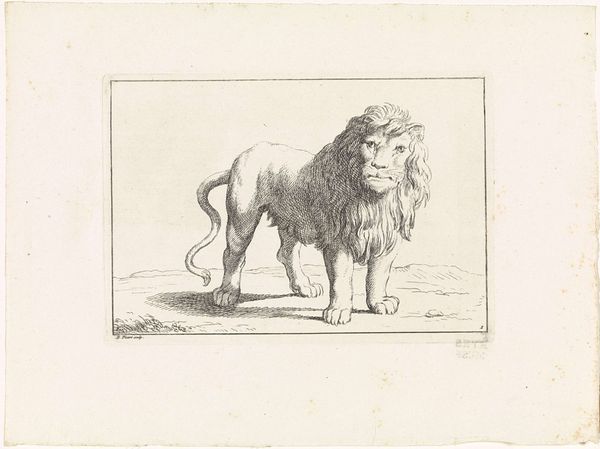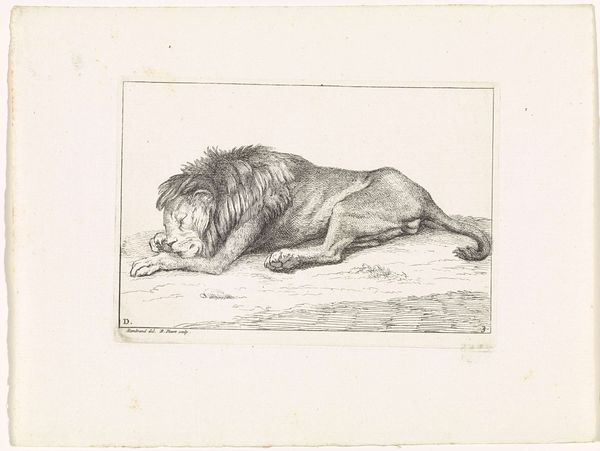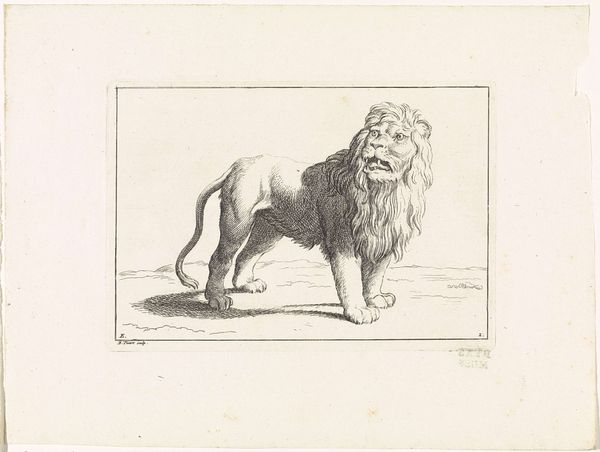
drawing, graphite
#
portrait
#
drawing
#
animal
#
pencil sketch
#
graphite
#
realism
Dimensions: height 270 mm, width 348 mm
Copyright: Rijks Museum: Open Domain
Editor: This drawing, called "Leeuw," by Eugène Verboeckhoven, likely made between 1825 and 1849, is rendered in graphite. There’s something immediately striking about the lion’s gaze, a kind of regal weariness. What do you make of it? Curator: The lion, an ancient symbol of royalty and power, is presented here in a rather subdued manner. Notice how Verboeckhoven captures its form with such meticulous detail, yet the gaze you mentioned hints at something beyond mere physical strength. Do you think it challenges our perception of the lion’s symbolic weight? Editor: I think it does. We expect the roaring king of beasts, but get something much more…contemplative? Curator: Precisely. It’s interesting to consider what this means in the context of the 19th century. Lions often represented colonial power and imperial ambition. By depicting this lion with a touch of melancholy, is Verboeckhoven perhaps hinting at the burden, or even the illusion, of such power? Editor: So it's more than just a portrait of an animal? It's almost a commentary on societal ideas around power and control, represented through this very iconic creature. Curator: Exactly. The enduring image of the lion carries so much cultural memory. Think of the Lion Gate of Mycenae or the lions on heraldic crests throughout Europe. Verboeckhoven uses that established imagery to provoke new considerations. Does it succeed, in your opinion? Editor: Definitely. I hadn’t thought about the history of lion imagery. Looking at this drawing now, I see not just an animal, but a symbol weighed down by its own significance. Curator: And perhaps the artist, by imbuing the lion with such psychological weight, invites us to reconsider the symbols we inherit and the stories they tell.
Comments
No comments
Be the first to comment and join the conversation on the ultimate creative platform.
